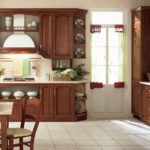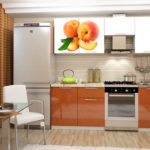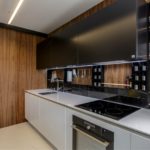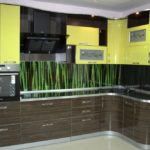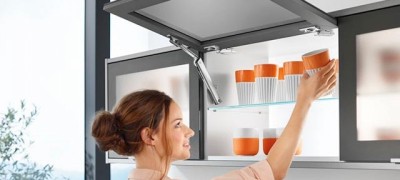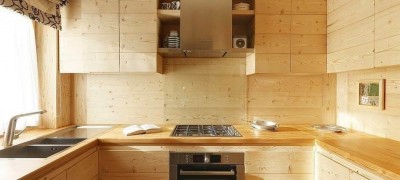Features and method of fastening kitchen cabinets to the bar
Thanks to a well-positioned kitchen set, you can significantly save space and hide excess dishes from prying eyes. An excellent solution would be the installation of wall cabinets, which will make even the smallest room functional.

The principle of operation of the bar for the canopy
The whole structure consists of a specially prepared metal strip, on which a hook is located, which is attached from the inside to the side wall of the cabinet. From the side, such strips for fixing wall cabinets in the kitchen are invisible.

Advantages and disadvantages of the plank
This uncomplicated design has a number of advantages, thanks to which it gained its popularity:
- Even non-professionals - people with basic construction skills - can cope with the installation.
- When installing adjustable awnings, you do not need to measure and drill holes for each hanging wall cabinet separately. The general level is being fought back.
- The anchor bolts can be used to adjust the position of the cabinets. They can be put on the same level, regardless of the flaws in the wall.
- Unlike fastening for wall-mounted kitchen cabinets on dowels, the design with a strip is considered more "hardy" and reliable. Even if a couple of self-tapping screws weaken over time, the rest will hold well even the most full cabinets.
The system has no global shortcomings. The only thing worth watching when purchasing a bar is the quality of the material. Low-grade metal will bend a lot and may even break during furniture assembly.

Installation method
In order to properly fix the kitchen wall cabinets, you need to select the tool in advance and strictly follow the installation technology. It is easier to do work in 4 hands, but 1 person can also handle it. Of course, it will take a little more time, it will require the utmost concentration of attention, accuracy and caution.

Preparatory stage
Before starting the process of drilling surfaces and directly mounting, you need to perform the following actions:
- Cleaning and leveling the walls. The easiest way to do this is with drywall. Previously, a frame of profiles must be fixed on the wall, on which the structure of the cabinets will be held.
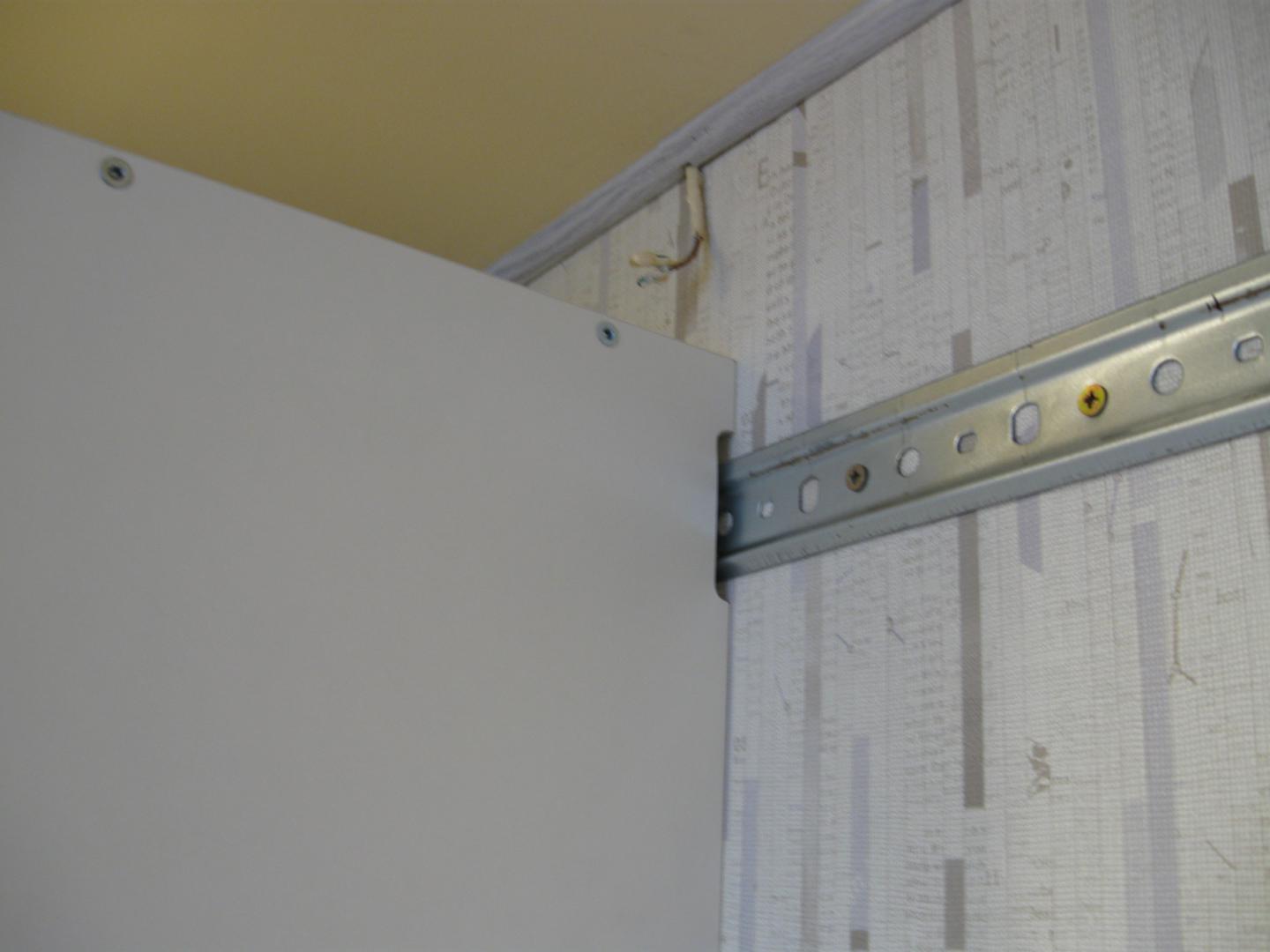
In order to start the process of installing kitchen cabinets, you need to align the walls. - For corner kitchens, the mating angle of the two planes should be kept at 90 degrees. If the curvature of the walls is negligible, you can simply plaster them.

Please note that for a corner kitchen, a wall mating angle of 90 degrees is provided. - Drawing basic markings. Using a perpendicular, a construction pencil and a level, you need to schematically position the attachment points, select the height of the structure.

This stage should be performed using a plumb line, pencil and level. - If the situation requires it, you must first perform the installation of all sockets and lighting fixtures, attach all related elements.

Installation and connection of all sockets and fixtures must be done in advance. - Before starting work on the installation of kitchen cabinets, the walls must be painted or covered with wallpaper - after installation, no repair work should be carried out.

All work can be done independently, without anyone's help.
Hanging heights
It should be convenient to use the headset, therefore, the height of the lockers directly depends on the height of the owners and the anatomical features of their figure, the characteristics of the room.

Main criteria and figures:
- The boxes should be tactile and located at eye level. On average, the distance from the countertop plane to the upper cabinet is 55-65 cm. In this case, a person should reach the uppermost shelf without the risk of dropping the desired item and without using auxiliary items (chairs, benches, etc.).
- If you do not plan to mount a tabletop or the lower part of the headset, then the ratio of a person's height and the height of the fastener should look like this:
- up to 165 cm - 175-180 cm;
- 165-157 cm - 185 cm;
- 175-190 cm - 200 cm.

Required tools and materials
For a quick and high-quality work, you will need:
- Drill or hammer drill with drills or drills. For bricks and concrete, impact mode should be used; for other surfaces, conventional drilling will suffice. When working with tiles, you need to stock up on drills with victorious solders.
- A screwdriver, by means of which self-tapping screws will be screwed to fasten the holders to the cabinets.
- Construction pencil and tape measure.
- Level for marking the location of the lockers and adjusting the awnings.
- Stable staircase.
Step-by-step instructions for installing the strip
The work must be performed in the following sequence:
- Initially, the size of the bar is measured and a corresponding mark is made on it. The bar can be cut with a hacksaw for metal, a grinder, or simply broken off.
- On the wall, taking into account the indentation from the top edge of the cabinet, marks are made for drilling. You can mark them with dots or draw a solid line for the entire typeface.

The main thing is that all measurements are made using the building level. - After the holes in the wall have been drilled, you need to check the location of the anchors: they should be carefully hammered into the wall and make sure that the depth of all elements is the same. In total, due to one incorrectly installed anchor, the cabinet may not adhere to the wall and the whole structure will be distorted.
- The bar for hanging kitchen cabinets is applied to the wall (here it is desirable that two people work: one holds the suspension, the other fixes it), the anchor bolts are inserted into the necessary holes and hammered into place. Using a screwdriver or screwdriver, the fasteners are carefully tightened.

It is important! It is better to use a hand tool through which the force can be adjusted. Otherwise, there is a high probability that the anchors will be tightened with different intensities.

How to hang on drywall
The most “painless” method is to screw the anchor bolts through the drywall into the base of the wall. The method has one significant drawback - it is easy to overtighten the bolt, which will lead to cracks in the drywall sheet.

A safer and safer way for materials is the use of mortgages, which are installed on the wall at the design stage. Their role can be played by timber, metal profiles, etc.

The wall is sewn up with plasterboard, and marks are placed at the location of the mortgages. It is at these points that the kitchen cabinet will then be fastened to the wall. The principle is the same as in the previous method - using anchor bolts, but the load can be set 1.5 times more.
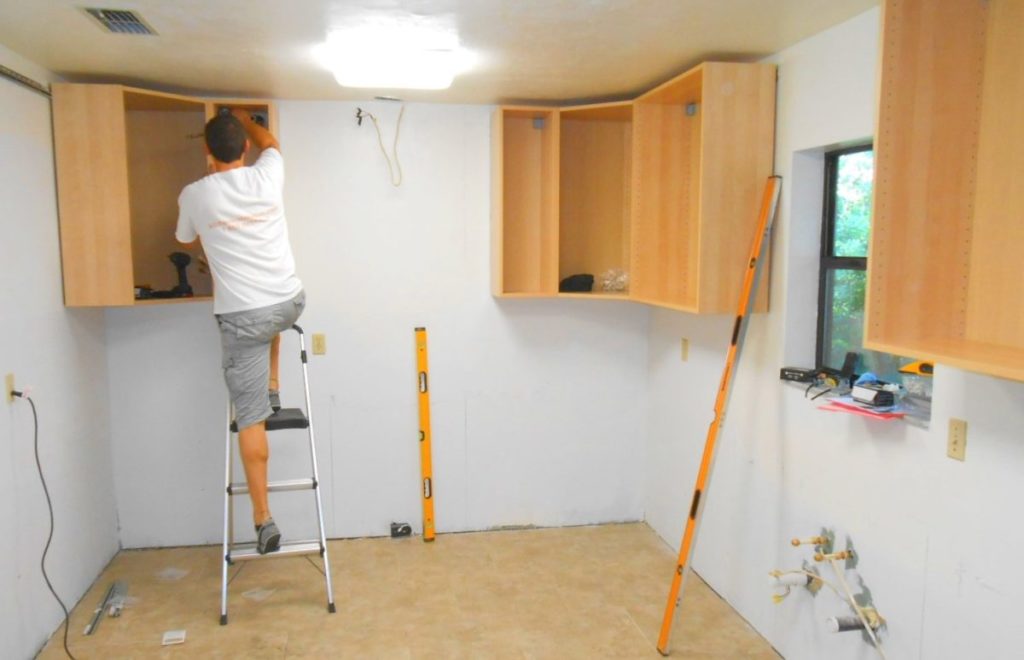
Video: hanging kitchen cabinets on the bar








